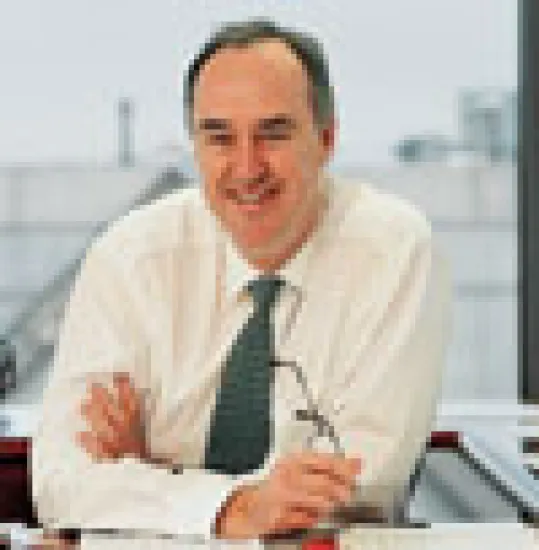Woe to any money management firm that tries to sell a new brand of mutual funds. Competition in the crowded U.S. marketplace was tough enough before the stock market tanked during the summer of 2007 and customers started pulling their money out. Now, as the mutual fund market contracts, new entrants are getting squeezed out even before they gain a foothold. “We have not seen this difficulty since the 1980s, when we were coming out of the bear market of the 1970s,” says Geoff Bobroff, president of Bobroff Consulting in East Greenwich, Rhode Island.
Amid the turmoil, $315 billion-in-assets Old Mutual Asset Management of Boston has scaled back a retail expansion plan. Tempted by the promise of high fees — at least 70 percent more than in the institutional market, where it has thrived — the firm spent some $35 million over the past two years to repackage dozens of institutional investment strategies managed by the 20 boutiques it owns into an Old Mutual–branded retail fund family. But the bet has been slow to pay off. Assets in funds sold through Old Mutual Capital, the Denver-based retail distribution arm, rose 14 percent, to $4.5 billion, in the two years through December 31, 2007. But net outflows of $250 million, combined with declines in securities values, caused assets to drop to $3.8 billion in the six months ended June 30, according to Financial Research Corp. in Boston. Meantime, distribution costs rose, cutting into OMAM’s operating profit, which fell 7 percent, to $149 million, in the first half.
“It has been hard in some of the retail markets,” concedes Jim Sutcliffe, CEO of Old Mutual, the London-headquartered South African life insurance giant that owns OMAM. “Retail margins have tended to squeeze down a little bit. So we put our emphasis back into the institutional world again.”
Now OMAM is investing in a new marketing effort to sell its rebranded funds to the defined contribution market in addition to the defined benefit plans that make up two thirds of the firm’s assets under management. OMAM is taking advantage of a trend favoring 401(k) plans among U.S. corporate employers, many of which are freezing their defined benefit plans in response to legislation passed by Congress and accounting rules issued by the Financial Accounting Standards Board two years ago that reduce plans’ flexibility by moving them closer to mark-to-market accounting. This shift in focus was begun by Scott Powers, CEO of OMAM from September 2001 until April 2008, before he crossed town to become CEO of State Street Global Advisors, the second-biggest U.S. money manager, with $1.9 trillion in assets.
Powers’s departure hasn’t made Sutcliffe’s job any easier. OMAM’s chief operating officer, Tom Turpin, is filling in as interim CEO of the U.S. asset management business while the 52-year-old Sutcliffe searches for a new chief executive. He’s looking for someone who has the mix of managerial, sales and investing skills required to manage OMAM’s boutiques, which are spread out from San Francisco to London and across asset classes ranging from value equity to core bonds to funds of hedge funds.
Sutcliffe must also replace Kevin Hunt, the head of sales and marketing, who announced his retirement last year and left when Powers did. Sutcliffe says the departures were a coincidence. Now he is aiming to boost the operating profit margin to the industry standard of 30 percent, from 28 percent on June 30. And he wants to increase OMAM’s share of Old Mutual’s worldwide operating profit to one third from the current 10 percent.
Powers, 49, says he “made some significant progress” toward those goals while at OMAM. The former Harvard University hockey star whipped into shape United Asset Management, a dysfunctional group of boutiques that Old Mutual acquired in 2000. From 2001 to 2007, OMAM’s operating profits nearly doubled, from $167 million to $324 million. Assets more than doubled, from $150 billion to $336.2 billion, while a net outflow of $15 billion in 2001 became a net inflow of $5 billion in 2003. That grew to $35.2 billion last year.
For Powers’s successor, the question will be, where will profits come from now? Sutcliffe is pinning his hopes on innovative target-date retirement funds that OMAM started marketing to 401(k) plans in March. Conventional target-date funds simply let investors designate a retirement year, and assets are gradually reallocated from aggressive equity toward conservative fixed income as the date approaches. OMAM’s Target Plus funds offer three “risk glide paths” — conservative, moderate and aggressive — which allow people to take more or less risk depending on other factors, including their earnings, how many children they have and the size of their mortgages. Except for a series of funds offered by Scotiabank in Canada, no other target-date fund works this way, says Scott Wentsel, a senior portfolio manager at Ibbotson Associates in Chicago, who advised OMAM on Target Plus asset allocations. Because each fund has three different versions, the start-up cost was at least double the norm for target-date retirement funds, says Wentsel.
To be sure, Old Mutual is not the only firm struggling in the U.S. Consultant Bobroff says the firm has fared no worse than any other fund-market entrant since the turn of the century.
Even less fortunate is the former Zurich Scudder Investments, now called DWS Investments, which Deutsche Asset Management acquired in 2002. DWS’s assets grew 1.0 percent, to $60.3 billion, in the 24 months through December 31, 2007. It suffered $1.4 billion in net outflows during the first six months of 2008 and by June 30 had $54.6 billion under management. Philipp Hensler, CEO of distribution for DWS in New York, attributes some of the asset loss to the firm’s decision to exit from variable annuities.
Then there’s the GendeX Fund, a mutual fund that New York hedge fund manager James Perkins introduced last October for people in their 20s and 30s. He liquidated it after it almost perfectly tracked the Standard & Poor’s 500 index’s 12.4 percent drop from January 1 to July 31.






